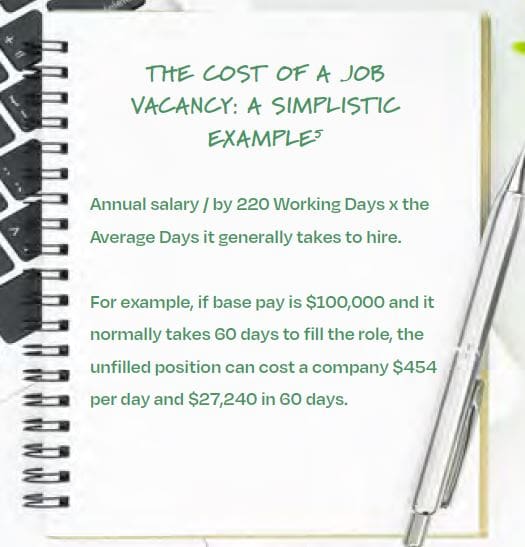Top Hiring Trends for 2024: Growing Amid Uncertainty

Uncertain. Resilient. The job market continues to be a roller coaster amid a volatile economy that’s growing despite interest rate hikes and continued recession fears. Strong labor numbers and falling inflation indicate the country may be headed towards a softer landing than predicted.1 Yet, economic worries have slowed hiring in most industries. Job openings are still plentiful, but both employers and candidates are putting on the brakes with hiring decisions.
To meet these challenges, companies need to evaluate recruiting practices and determine the right mix of compensation, benefits, and culture to attract the right talent at the right time. Here’s the top hiring trends in 2024.
Hiring Trends for 2024: From Red Hot to Cool Down
Last year’s frenzied job market has shifted massively in the last six months, with pockets of high demand in industries like healthcare and information technology and low demand in others. Companies that averaged wage increases of 4.4% over the past year3 are now hitting pause. Talent shortages persist, especially in mid-level positions like customer service and project management. However, recession concerns have locked hiring managers into putting projects on hold or maxing out current staff.4
Those already employed want flexibility and fair compensation, yet reports of workforce cuts and corporate restructuring have made them more cautious about seeking new opportunities. Those who are looking have lofty expectations and are receiving multiple offers. Heading into 2024, companies hiring need to work harder to make the case with candidates and be prepared to counter offer. Those pausing need to weigh the financial cost of leaving positions open.

Remote Work Rewind
It seems like only yesterday that employers could not fill jobs unless they offered fully remote work. Flash-forward to 2023 where the tide is turning. Some high demand roles, like medical coders and health information managers, are still fully remote. But companies across the U.S., from major cities on the coasts to smaller markets, are steering back to hybrid and on-site work.
“We have seen trends across certain industries we support, where some companies are taking longer to make hiring decisions.”
Ed Kavanagh, President HR & Administrative, Addison Group
Even Zoom, the quintessential work-from-home brand, shifted to a hybrid environment, requiring employees within 50 miles to work in-office at least two days a week.6 Business leaders point to lower productivity as the primary reason for the return on-site. While new studies indicate fully remote positions lead to lower productivity, higher job turnover in the past couple of years also plays a role as new hires take more time to get up to speed. Companies recruiting workers on-site need to double down on culture with more social events and continuous learning opportunities.
“Beyond cyclical factors, we believe the US staffing industry is benefiting from secular growth drivers, such as greater acceptance of contingent work arrangements, a shift to remote work that has enlarged the talent pool, and the emergence of staffing platform technology.”14
Staffing Industry Analysts (SIA)
More Incentives Please
Forecasts show many are still planning a 4% wage increase in 2024, only slightly down from 2023.9 Workers who are already hesitant to leave their current employer may be even harder to recruit in another 6-12 months. That means companies will continue to pay higher salaries to win talent. If they reduce remote work, they will need to ratchet up their benefits like bonuses, wellness programs, mental health services, tuition reimbursement, and pet-friendly policies. Culture is a major hiring trend for 2024 and is still a top priority for job candidates, especially when you ask people to spend more time on-site. Skills development, coaching, and opportunities for promotion can mean as much, if not more, in a final job decision.10

Aging Workforce Boom and Bust
By 2031, over 150 million jobs will shift to workers over 55, making up more than a quarter of the workforce.11 This massive shift is both a boom and bust for recruiting. These older workers bring knowledge, experience, and often greater reliability to organizations. Employers struggling to fill administrative and consulting roles are looking more to retired leaders heading back to work for economic and social reasons.
“Employers now take an average of 11 weeks to fill vacant roles – up from 7 weeks in 2021.”2
HR Drive
In contrast, industries like accounting are seeing retirement-age workers exit in droves. That leaves companies scrambling for talent as young people steer towards other finance careers. Other industries like construction and manufacturing are experiencing the same exodus. More employers are adding new perks to keep boomers around longer—Booking.com and lending giant Fannie May recently introduced ‘Grandparent’s Leave’ which offers paid leave to spend time with their grandchildren. Paid sabbaticals are also gaining popularity.12
Hiring Trends for 2024: AI is Ready to Transform Work
Tighter hiring budgets and staffing shortages are leading more companies to explore how AI and other emerging technologies can fill the gaps. It’s no secret that ChatGPT and other AI software can impact professions such as marketing, education, and administration. However, automation is already impacting many industries from medical imaging analysis in healthcare to robots and remote operations in manufacturing.
Today AI primarily enhances the way professionals work. Within the next decade, activities that account for up to 30% of hours worked across the U.S. economy could be automated.13 Lower wage roles in office support and customer service will likely see a decline. As people leave shrinking occupations, they will have to shift to new industries. For employers, this will require a mindset shift to hire for competency rather than credentials. It also opens the door to recruit from more diverse groups and provide training that will prepare their next generation of workers.
This article features top hiring trends for 2024 from Addison Group’s 2024 Workforce Planning Guide.
For industry-specific trends and salaries for various roles across 20 metro area locations, download your free guide today!
1 NPR, THE STATE OF THE – SURPRISINGLY RESILIENT – ECONOMY, 2023
2 HR DRIVE, HIRING MANAGERS SAY ‘TIME TO FILL’ HAS SLOWED TO 11 WEEKS, 2023
3 REUTERS, US JOB GROWTH SLOWING, BUT WAGE GAINS REMAIN STRONG, 2023
4 NBC NEWS, JOB MARKET SLOWS AS MORE PEOPLE ARE LOOKING FOR WORK, 2023
5 PROPELHR, THE REAL COST OF UNFILLED JOBS, 2022
6 ENTREPRENEUR, THE COMPANY THAT TOOK REMOTE WORK BY STORM IS TELLING EMPLOYEES TO RETURN TO THE OFFICE, 2023
7 SHRM, WORKER PRODUCTIVITY IS DOWN. IS REMOTE WORK THE CAUSE?, 2023
8 YAHOO! FINANCE, 72% OF COMPANIES HAVE RETURN-TO-OFFICE MANDATES, 2023
9 SHRM, EMPLOYERS BUDGETING 4% PAY RAISE IN 2024, 2023
10 BUSINESS NEWS DAILY, A POSITIVE COMPANY CULTURE IS A TOP PRIORITY FOR JOB SEEKERS, 2023
11 CNBC, MASSIVE SHIFT, 2023
12 HRD, WILL ‘GRANDPARENT LEAVES’ KEEP OLDER WORKERS IN THE WORKFORCE, 2023
13 MCKINSEY GLOBAL INSTITUTE, GENERATIVE AI AND THE FUTURE OF WORK IN AMERICA, 2023
14 SIA, US STAFFING INDUSTRY FORECAST: SEPTEMBER 2023 UPDATE, 2023




